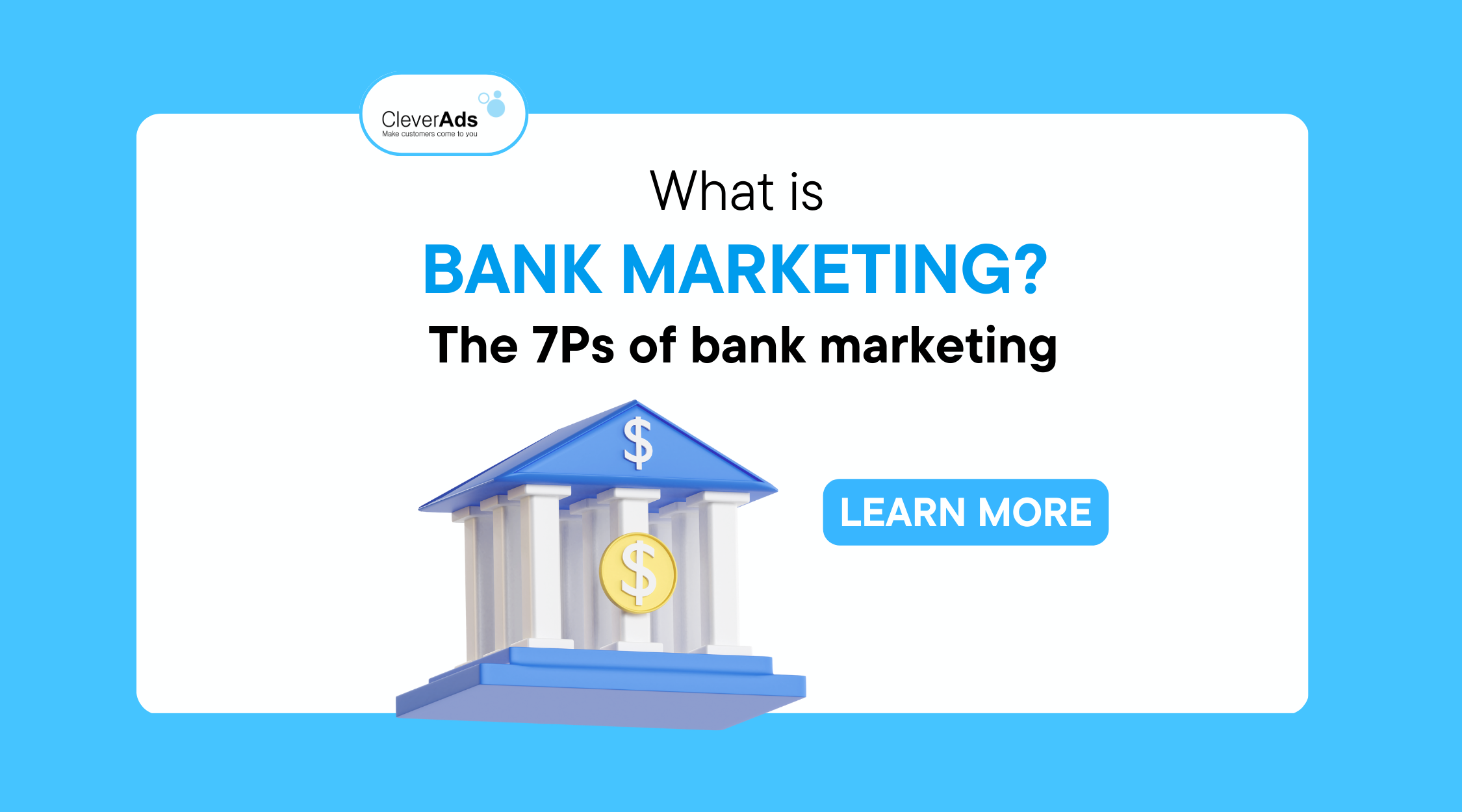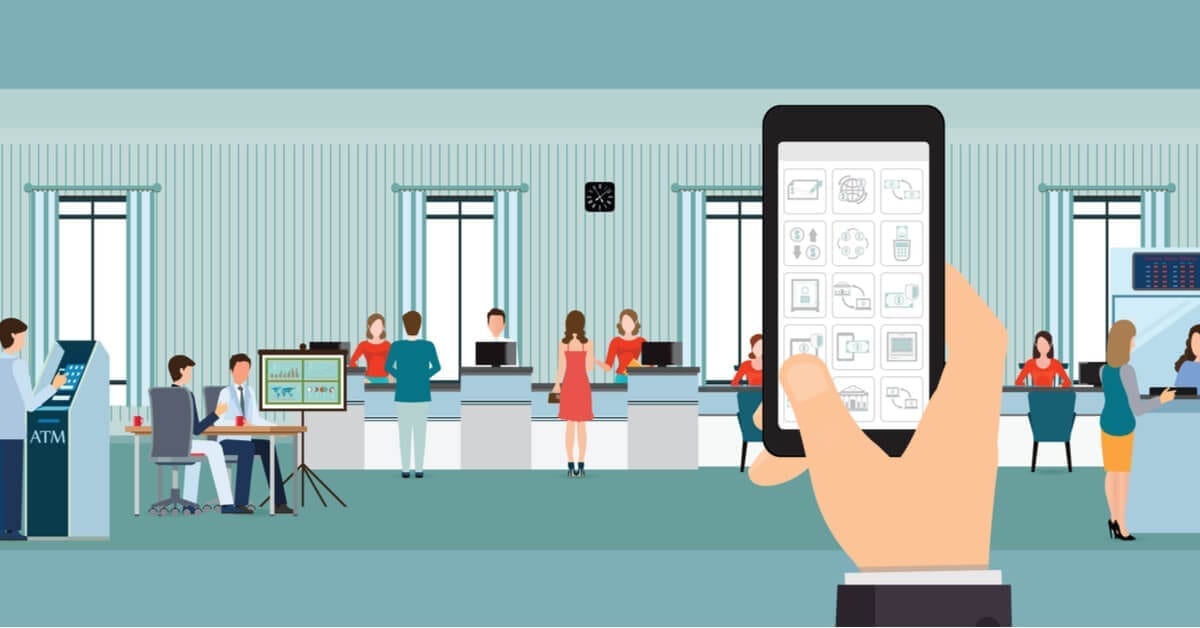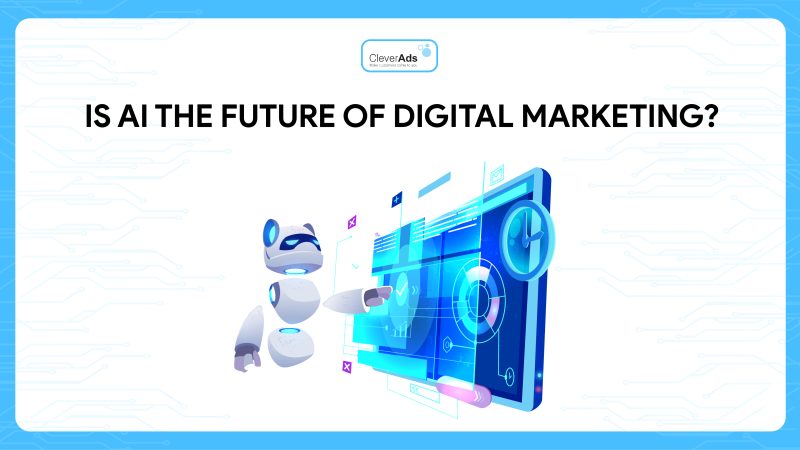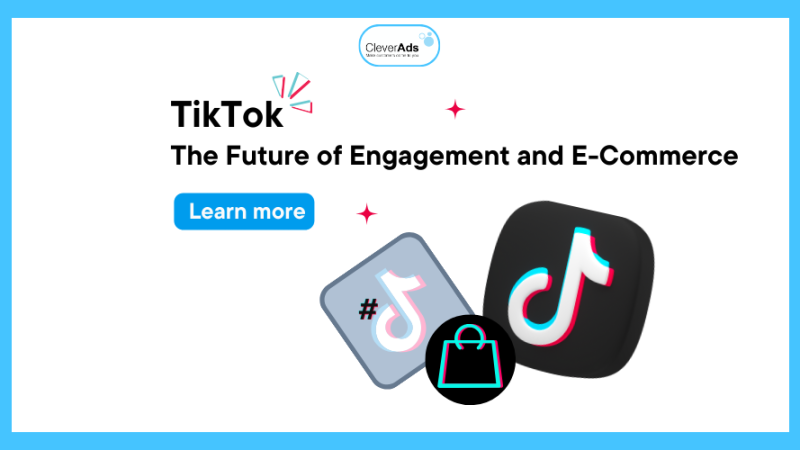What is bank marketing? The 7Ps of bank marketing

What is bank marketing? 7P strategy in bank marketing? How do banks market to breakthrough growth? Find out with CleverAds through the article below.
1. What is bank marketing?
Bank marketing is a process in which a bank directs all its efforts towards proactively satisfying the needs and wants of its customers, thereby fulfilling the needs and wants of the bank.
Bank marketing is the synthesis of methods of bank management and customer service to meet the requirement of the customers in the business environment and thereby achieve profit goals.
2. The primary content of bank marketing
Bank marketing plays a major role for banks and has the characteristics of service marketing.
2.1. The role of bank marketing
Bank marketing has 3 main roles:
Participate in solving primary economic problems of bank businesses.
These issues are
1. Adjudicating types of products and services that the bank should provide to the market through market research activities,
2. Organizing the process of delivering products and services, completing the exchange relationship between customers and banks in the market,
3. Harmoniously settle the connection of interests between customers and employees, and bank leaders.
Linking bank activities with the market
Marketing helps the bank to recognize the fluctuations of the market and the demand of customers for products and services, making the bank’s operations highly effective.
Contributing to the bank’s competitive position
Marketing helps to create the uniqueness of products and services and emphasizes and maintains the bank’s distinct advantage in the eyes of consumers.

2.2. The nature of bank marketing
Like other service marketing industries, bank marketing has 4 main characteristics:
Invisibility
Intangibility makes it difficult for customers to recognize, try, or evaluate service quality before actually using it, which is a barrier to bank marketing activities. Therefore, marketers need to convey service quality through forms such as reviews from consumers, etc.
Not separate
In bank services, customers must be present to enjoy the service, which is affected by the service delivery process, the provider’s attitude, and the providing environment. For that reason, customer service staff, tellers, etc., and any personnel who have contact with customers need to be trained to satisfy customers.
Heterogeneous
Services at banks do not provide a broad range and customer perception of service quality. It is strongly affected by the skills and attitudes of the provider. Therefore, the supplier has a big influence on customer satisfaction.
Unable to store
Services cannot be stored and reused, so there will be supply and demand problems. The demand for service in the bank industry is vast and growing with millions of transfers and other services. Therefore, for customers to not have to wait, banks aim to increase service speed through automation, arrange more personnel during peak working hours, create comfort for customers while waiting, etc.
3. The 7P strategy in bank marketing
3.1. Product / Service
Product/service defines the core offering of a business. Kotler and Armstrong (2013) characterize a product as anything tangible or intangible offered to a market for its attention, use, and consumption to satisfy customer needs and wants. By this definition, they consider products to include services.
The bank’s products include customer accounts, such as checking accounts, savings accounts, and savings accounts for children. Other products are investment advice, loans, and agency. Studies have established the relationship between product and customer satisfaction.
3.2. Price
In the 7Ps of the mixed marketing strategy, only the price strategy is direct for the profit goal of the bank, the strategy of the remaining Ps, the bank has to pay costs to realize the set goals. It is up to the bank marketer to choose a pricing strategy that balances the bank’s and its customer’s interests.
The bank’s ‘price’ is fixed in the form of interest rates, service fees, and other fees to cover transaction costs, overheads, and risk premiums and generate a reasonable surplus for the bank.
3.3. Place – Distribution Channel
Kotler (1976) showed that distribution is related to distribution channel, range, store location, inventory level, and location.
In banks, the distribution involves internet banking, telephone banking, teller, ATMs, etc. Related studies have shown that distribution factors such as online banking, Machine Automated transactions, bank branches, etc. affect customer satisfaction.
3.4. Promotion – Communication
Communication is sending the consumer a persuasive message about a particular product/service.
The bank’s communication strategy includes information and communication activities about the bank’s products and services to customers, such as advertising, personal transactions, sales promotion, direct marketing, public relations, etc.
3.5. People
People refer to the people involved in the delivery of the service. Their level of training, interpersonal behavior, commitment to service delivery, and appearance greatly determine customer satisfaction.
People in bank marketing can include tellers, security guards, etc. All personnel in the organization, especially those with direct contact with customers. Those who have direct contact with customers need special training to stay professional, have the right attitude, be welcoming to customers and pay attention to all their complaints.
3.6. Processes
The process shows the procedure of services. Systems and processes are seen as vehicles for customer satisfaction.
Depending on the geographical region, the characteristics of the target customer, and the process factors to satisfy the customer are classified differently. In Spain, the most important factor in e-banking services is the website’s ease of use. Elsewhere, quality of service is the top factor for customer satisfaction.
In Vietnam, offline banking still accounts for the majority. It is gradually shifting to electronic banking, so the quality of services at the bank and the application’s ease of use must be focused on.
The one-touch payment feature of cards associated with Napas is very popular for its convenience.
3.7. Physical Evidence
Physical evidence refers to tangible proof of the product or service. It could be the business’s environment, for example, parking areas, furniture, colors, air conditioning systems, etc.
In bank marketing, physical evidence is represented in the banking space, cards, papers, etc.
Some banks in Vietnam have used this factor to attract young customers: short account numbers, choosing the desired account number, and color card.

4. Case study of Vietnamese bank marketing
VPBank – Cooperation to promote digital transformation with businesses
Successful digital transformation and continuous expansion of customers from individuals to businesses have helped VPBank achieve a profit in the first quarter of 2022, which has tripled compared to the same period last year.
Not only targeting individual customers with services such as Cake and Timo digital bank, but VPBank is also positioned as “financial leverage” to lift businesses to great success.
To do this, VPBank has cooperated with partners Clever Groups and Google Workspace in the program “Digitalization of processes – Flexible administration” to support businesses to register for Google Workspace, speeding up the digital transformation process in a working procedure.
From this cooperation, the parties have launched a series of sales promotions through value, thereby encouraging businesses to register for the program:
Trial:
- Free three (3) months of using Google Workspace
- Free online transfer service
- Free consulting service and marketing plan
- Free website analysis and diagnosis
- 10% discount on services of Clever Group (CleverAds, REVU, AGlobal)
- Funding up to 500 million without collateral, preferential interest rate up to 2%
Present:
- Gift a beautiful digital account worth up to 5 million
- Free credit card with 0% interest
- The program has attracted many registered businesses and created a lot more value in optimizing their operations.
Clever Group – Trusted Digital Marketing Partner of Banks
Having the opportunity to become a partner of large and small banks such as Vietcombank, BIDV, Techcombank, VPBank, TPBank, MBBank, VIB, Clever Group with subsidiaries CleverAds, REVU, … are confident in helping Banks use Digital Marketing to attract users, increase brand awareness, etc.


